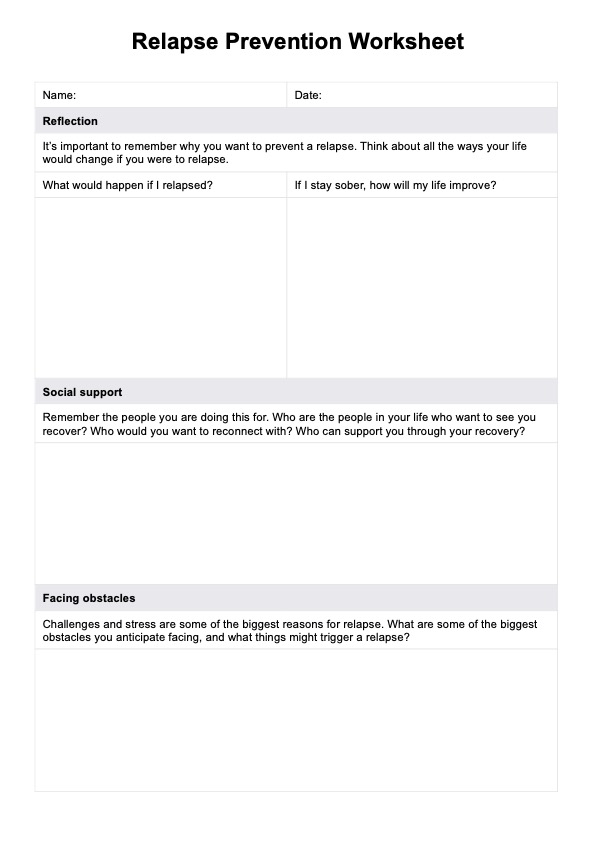The 4 D's are delay, distract, de-stress, and de-catastrophize. Each one helps the individual pause before acting, redirect their focus, calm their emotions, and reframe their thinking to resist a relapse trigger.

Relapse Prevention Worksheets
Our Relapse Prevention Worksheet helps your client maintain sobriety and learn coping skills. Empower, motivate, and educate your client today.
Relapse Prevention Worksheets Template
Commonly asked questions
Effective strategies may include identifying personal triggers, changing daily routines, avoiding places associated with substance use, seeking professional help, maintaining supportive relationships, and reinforcing positive habits.
Although often simplified as three, there are actually five key rules: change your life, be completely honest, ask for help, practice self-care, and do not bend the rules. These rules help maintain long-term sobriety by fostering accountability, healthy behavior, and a robust support system.
EHR and practice management software
Get started for free
*No credit card required
Free
$0/usd
Unlimited clients
Telehealth
1GB of storage
Client portal text
Automated billing and online payments











